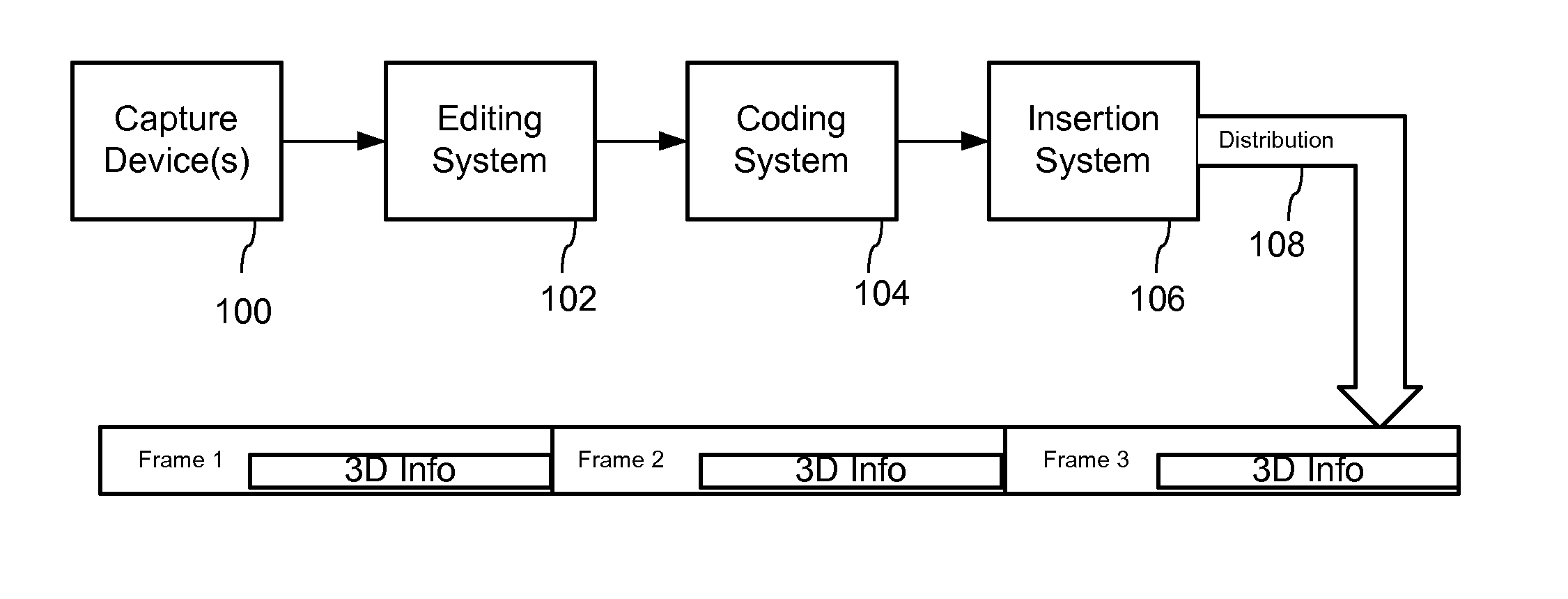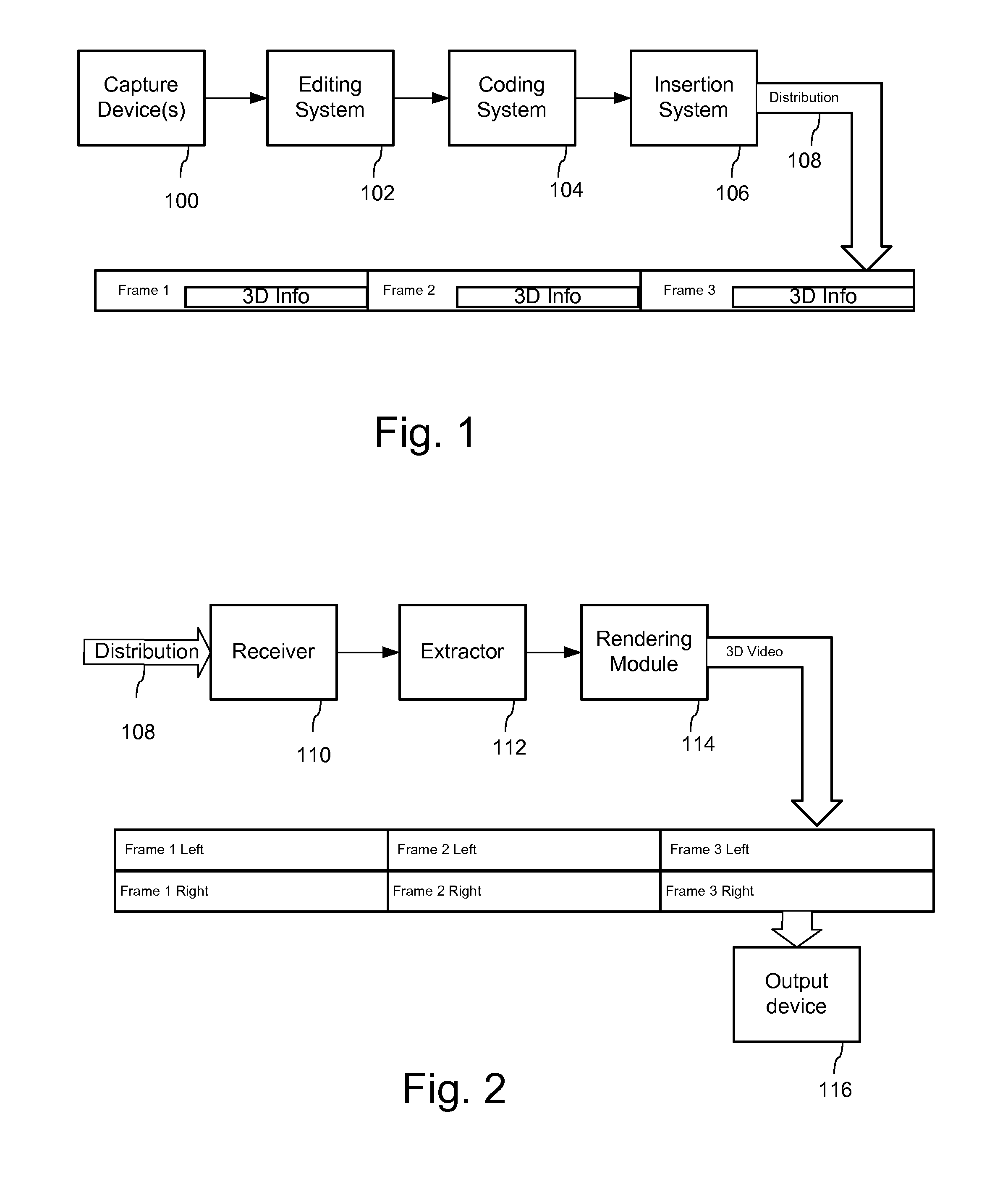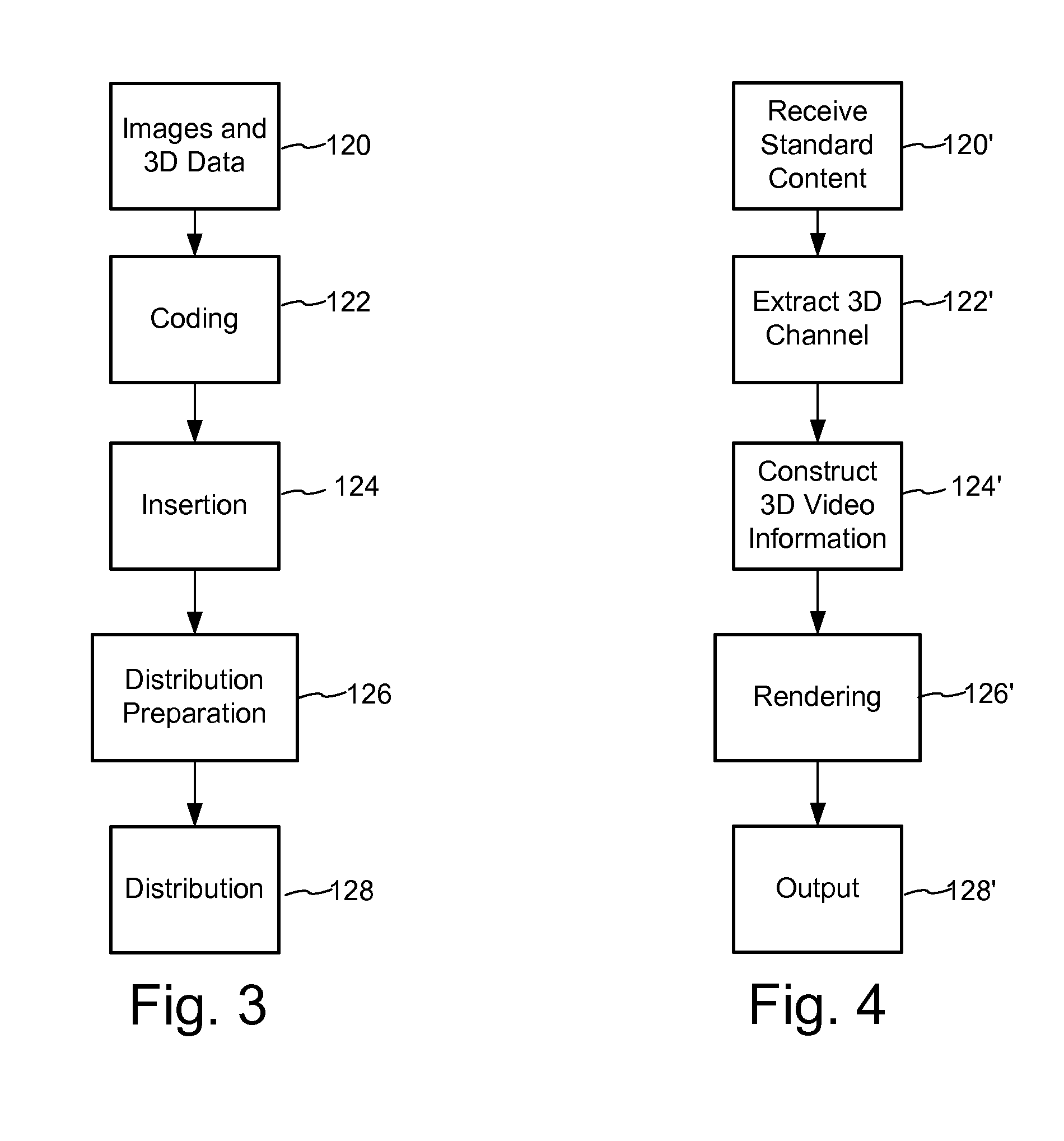3D Data Representation, Conveyance, and Use
- Summary
- Abstract
- Description
- Claims
- Application Information
AI Technical Summary
Benefits of technology
Problems solved by technology
Method used
Image
Examples
Embodiment Construction
[0024]The following sections describe examples of workflows and systems for creating, coding, transmitting and rendering 3D video. The term 3D video is not intended to be limiting, but instead, is intended to encompass formats for representing image content on a video output device that gives the viewer the perception of three dimensional objects. These include formats for representing stereoscopic video, omni-directional (panoramic) video, interactive, multiple view video (free viewpoint video) and interactive stereo video. These formats also include 3D still imagery, including stereoscopic still images. In addition to the horizontal (X) and vertical (Y) locations corresponding to image sample locations for the 2D display, 3D video equipment used with a 2D display depicts a third dimension, called depth (or disparity), typically represented by the variable, Z. Humans perceive a 3D effect because each eye views the world from a different perspective. Likewise, in the field of stereo...
PUM
 Login to View More
Login to View More Abstract
Description
Claims
Application Information
 Login to View More
Login to View More - R&D
- Intellectual Property
- Life Sciences
- Materials
- Tech Scout
- Unparalleled Data Quality
- Higher Quality Content
- 60% Fewer Hallucinations
Browse by: Latest US Patents, China's latest patents, Technical Efficacy Thesaurus, Application Domain, Technology Topic, Popular Technical Reports.
© 2025 PatSnap. All rights reserved.Legal|Privacy policy|Modern Slavery Act Transparency Statement|Sitemap|About US| Contact US: help@patsnap.com



